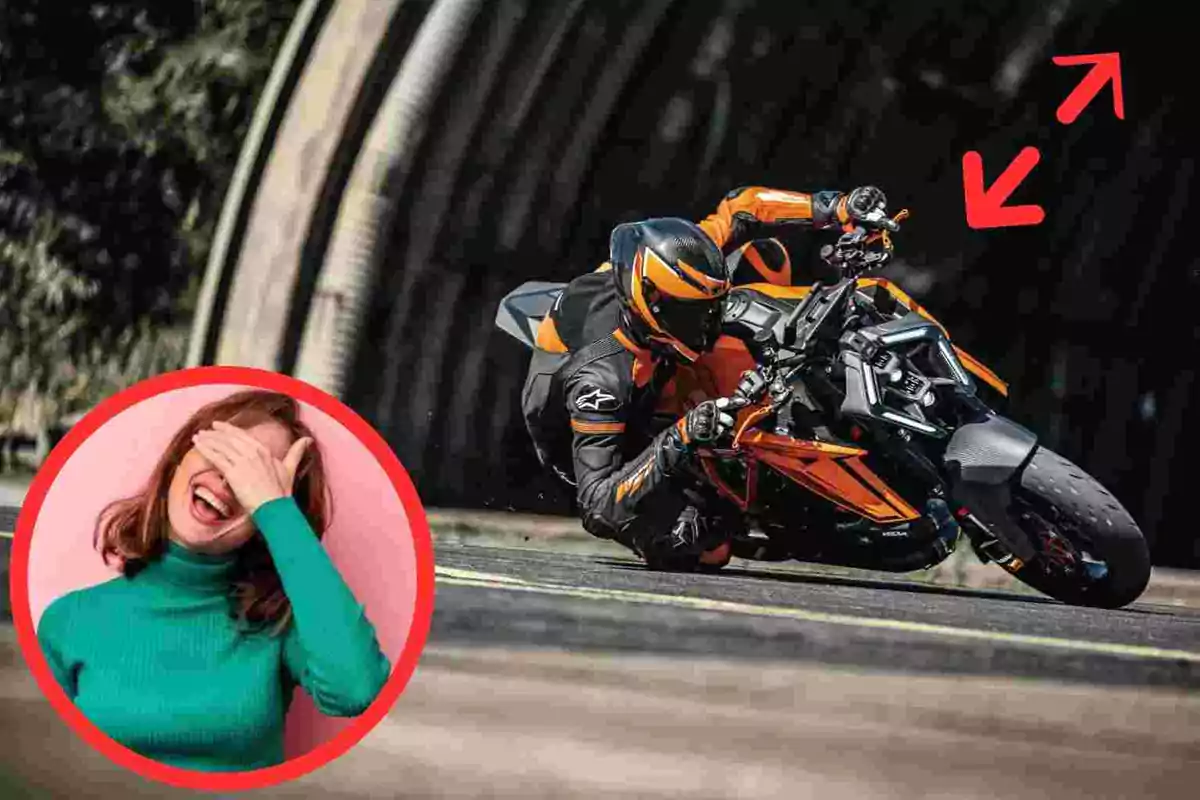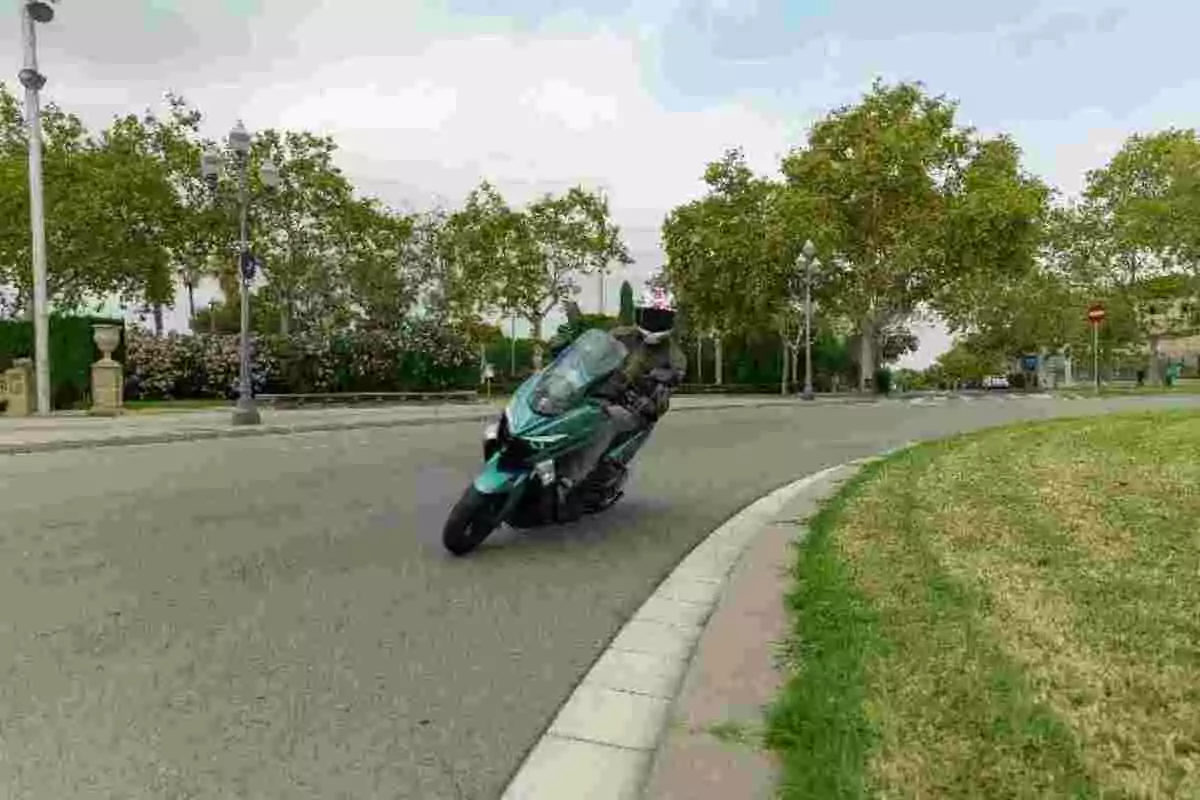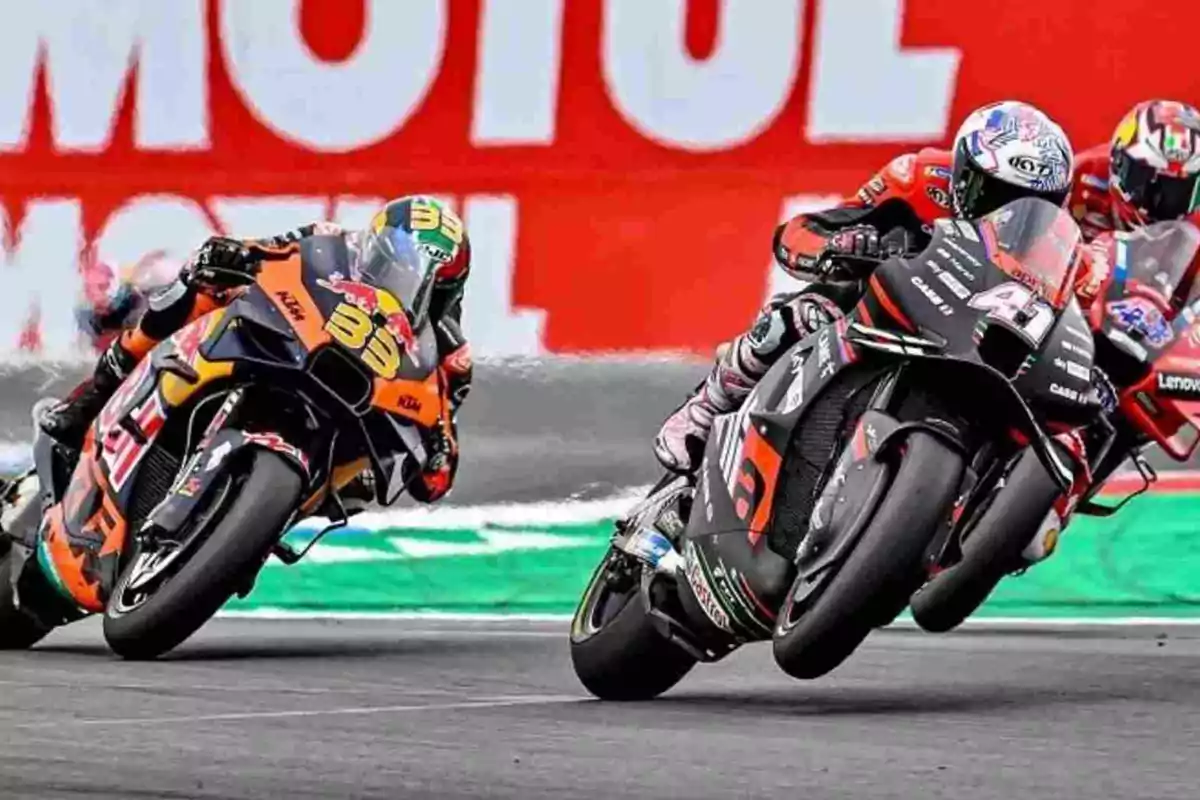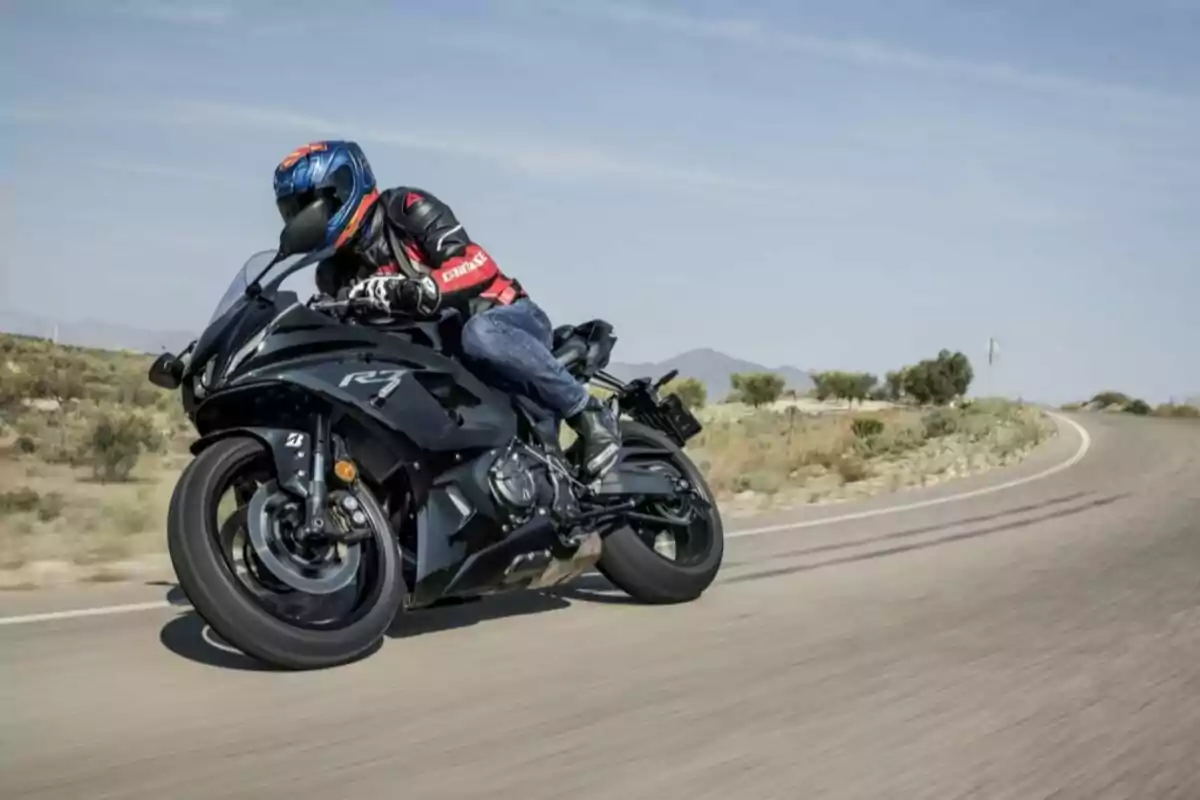
There is a natural force that helps you ride your motorcycle: it's not magic
In the world of motorcycles, there are phenomena that, we can say, are felt more than understood
The concept of movement on a motorcycle is a physical result. The great Paco Bultó, founder of Bultaco, defined it as "dynamic balance." He wasn't wrong.
Riding a motorcycle involves obvious paradoxes. At rest, only on two wheels, it's unstable and its tendency is to fall. In motion, however, it achieves great stability even when leaning.
Prices, offers, technical specifications, and images of all the motorcycles and scooters on the market
Motorcycles designed for track riding have special tires and specific architecture. They exceed 60° of lean from the vertical.

A essential physical principle
The secret lies in the so-called gyroscopic effect. It's a physical principle that, without knowing it, is present in every turn, every change of direction, and every movement of the motorcycle.
It's not magic or complicated science. It's simply the natural response of a wheel in motion that, when spinning, generates stability.
You can try it yourself. Grab a bicycle wheel by its axle with both hands at the ends and spin it. When you try to tilt it to one side, it tries to go to the opposite side by itself.
If you do it sitting on a stool with a rotating seat, the stool will move in the opposite direction of the tilt you give the wheel. It'll do it all by itself!
When a motorcycle moves forward, that spin generates an angular momentum that tends to keep the orientation of the wheel's axle. The greater the rotational speed and the weight of the wheel, the more pronounced that effect is.

In practice, this means that a motorcycle becomes more stable the faster it goes. That's why when stopped or at low speed, a motorcycle seems clumsy, unsafe. It's enough to gain a little speed for everything to flow naturally.
It's not just the rider's skill: the gyroscopic effect also does its job.
But it's not all about stability. The same effect that helps keep the direction also resists change.
To lean a motorcycle in a turn, you have to overcome that rotational inertia. That's why riders hang off. You also move your body to the inside of the turns.

Look at the front images of the last chicane at Assen in a GP. When the front wheel lifts during the change of direction, it points to the outside of the turn.
That is, it points to the right when the turn is to the left. That's the gyroscopic effect in action.
Your friend, countersteering
Here, a second phenomenon comes into play: "countersteering". Even if you don't know it or haven't been aware of it, you use it every time you get on your motorcycle or scooter.
By slightly pushing the handlebar to the left, the motorcycle turns to the right, and vice versa. This action, contrary to common sense, creates a lean that allows you to take the turn effectively.
Never been aware of it? Try it in a safe environment when you're alone. From a low speed, you'll discover it. It'll be very helpful to you.

Even if the rider doesn't reason it out, they do it naturally from the first few feet. This allows small riders, like Dani Pedrosa, to ride big motorcycles like a MotoGP with ease. The same goes for you on the street, for example, on a maxi-touring.
Engineers know it well. That's why they play with rotating masses (like crankshafts or wheels) to modify dynamic behavior.
A sport motorcycle will seek light wheels to reduce resistance to turning. An adventure bike, meanwhile, will accept some extra mass to gain stability off-road.

The gyroscopic effect isn't just a laboratory curiosity. It's a silent piece of the mechanism that makes possible that feeling of control every motorcyclist knows.
You can't see it, you can't touch it, but it's there, spinning with every wheel. It reminds us that physics also has its art. Or maybe you'd rather call it magic.
More posts: